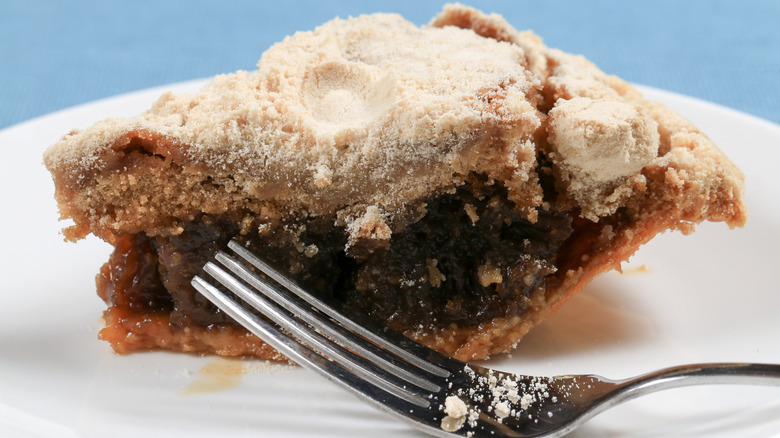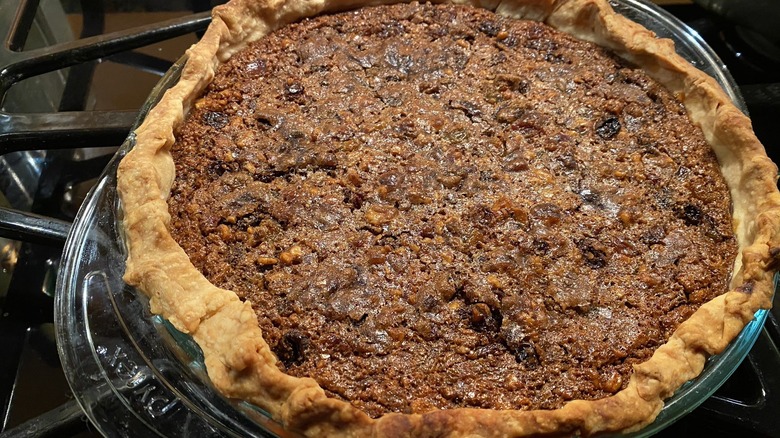The Pennsylvania Dutch Pie That Became A Symbol Of Death
When it comes to sending our dearly departed off into the afterlife, culinary funeral traditions are a key component. And, over time, many of these traditions have become specific to one location. If you've been to a funeral in the South and had yourself a plate or two of cheesy funeral potatoes, then you probably concur. Country Living notes people in the South have a fried chicken tradition at their funeral farewells. And, Deep South Dish shares that Southerners always do their funerals potluck-style which allows mourners to bring their favorite comfort casseroles to share and connect over.
However, Southerners aren't the only ones who like lots of food at their funerals. According to Atlas Obscura, if you have Pennsylvania Dutch blood running through your veins, food is a centerpiece of their funerals as well. Per the blog I Am Expat, the Pennsylvania Dutch hail from German immigrants and have connections to various religious groups including Reformed, Mennonite, Lutheran, and Moravian. They, too, need a good spread to help say their final farewells. However, during the 19th century, nothing helped them send their loved ones off into the next world like chowing down on a homemade pie that became so closely associated with funerals, it became a symbol of death.
The funeral pie
Raisin pie not only became a harbinger, announcing "death was near," it was aptly dubbed "funeral pie," according to Atlas Obscura. This pie could be found at wakes and community memorial services either before a person passed or after.
In fact if someone was to bake this pie outside of a funeral setting, then people would assume someone was going to die. Food historian, William Woys Weaver recounted a story to Lancaster Online about the time his grandmother, found the raisin pie recipe in a Pennsylvania Dutch. Weaver's grandmother (who was a Quaker) decided to cook it for her husband's aunt who was from a Mennonite background. Upon receiving the pie the aunt was grief-stricken as "she thought everyone knew something about her health that she didn't."
But, what does this culinary signifier of death taste like? Weaver explains that the raisin pie is "like a mincemeat pie, but with raisins." Nancy Schmeichel, a historical reenactor at Lancaster Museum explained to Atlas Obscura the raisin pie was "an absolute labor of love" that begins with a flaky crust and a dark black filling comprised of raisins, sugar, lemon, egg, and flour.
However, this pie's popularity has waned over the years, so if you are headed to a funeral to honor someone in the Pennsylvania Dutch community, don't expect to necessarily find raisin pie on the table. There are still elaborate spreads of food at these services, but the raisin pie has fallen out of style and been replaced by the likes of pizza, casseroles, and, as Weaver shared with Lancaster Online, lemon meringue pie. Of course, someone doesn't have to die for you to enjoy this sweet raisin pie. You could always make one for yourself.

